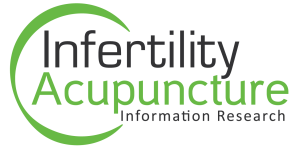Stress may increase the risk of miscarriage. And the study below shows that it may be especially harmful in early pregnancy. Acupuncture has been shown to reduce stress in early pregnancy and could be one of the therapies for miscarriage prevention.
Cortisol levels and very early pregnancy loss (miscarriage) in humans
Pablo A. Nepomnaschy , Kathleen B. Welch , Daniel S. McConnell, Bobbi S. Low, Beverly I. Strassmann , and Barry G. England
Abstract
Maternal stress is commonly cited as an important risk factor for spontaneous abortion. For humans, however, there is little physiological evidence linking miscarriage to stress. This lack of evidence may be attributable to a paucity of research on maternal stress during the earliest gestational stages. Most human studies have focused on “clinical” pregnancy (>6 weeks after the last menstrual period). The majority of miscarriages, however, occur earlier, within the first 3 weeks after conception (?5 weeks after the last menstrual period). Studies focused on clinical pregnancy thus miss the most critical period for pregnancy continuance. We examined the association between miscarriage and levels of maternal urinary cortisol during the first 3 weeks after conception. Pregnancies characterized by increased maternal cortisol during this period (within participant analyses) were more likely to result in spontaneous abortion or miscarriage (P < 0.05). This evidence links increased levels in this stress marker with a higher risk of early pregnancy loss in humans.
Spontaneous miscarriages can be triggered by maternal and fetal pathologies (1–6) or immunological incompatibilities (7–11). However, pathologies and incompatibilities alone do not explain all miscarriages (12). Maternal stress is commonly cited as a potential cause for at least part of pregnancy losses that remain “unexplained” (13–21). Yet, for humans, little physiological evidence exists in support of this hypothesis (22–24).
Empirical evidence indicates that most spontaneous abortions in humans take place during the first 3 weeks after conception (or <5 weeks after the last menstrual period) (25), which, coincidentally, is the time required for the placenta’s structural and functional units to develop (26). During the “placentation” period, human embryos depend heavily on their mothers for survival. For example, until the placenta is able to replace the corpus luteum as the main source of steroids, the fate of a pregnancy relies on adequate maternal production of estrogens and progestins (26–29). Thus, human embryos might be especially vulnerable to maternal challenges until the placenta matures.
Placentation is, therefore, a particularly relevant period for studying the relationship between maternal stress and pregnancy fate in humans. Previous research on the topic, however, has focused mainly on clinical pregnancy (>6 weeks after last menstrual period, equivalent to >4 weeks after conception) (23). Furthermore, except for studies on women with known fertility problems (22), past studies have rarely included physiologic measures (14–16,30). Whereas some previous studies found stress to be associated with spontaneous abortion (15, 24, 31, 32), others did not (23, 30). Thus, whether this relationship exists in humans remains unclear.
To fill this gap, we examine the association between a physiological marker of stress (cortisol) during the first 3 weeks after conception and pregnancy fate in a nonclinical population of nominally fertile women. Cortisol is commonly used as a stress marker because its production by the adrenal cortex tends to increase as a result of energetic, immunological, and psychological challenges (33–35). To address concerns about the use of cortisol as a stress marker (36), we account for the effects of a wide variety of confounding factors as well as for baseline differences among individuals and possible correlations within individuals.

